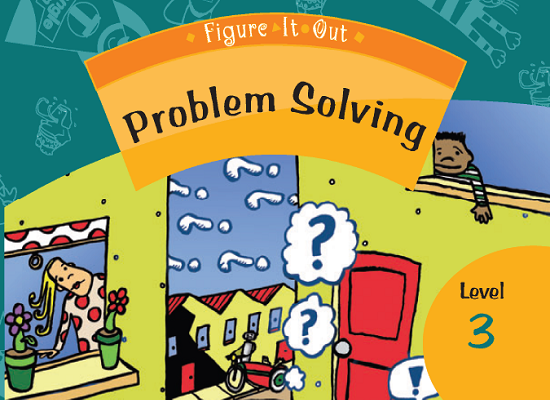Stretching exercises
This is a level 4 number activity from the Figure It Out series. It is focused on the use of number strategies to solve puzzles and exploring areas of geometric shapes on geoboards. A PDF of the student activity is included.

About this resource
Figure It Out is a series of 80 books published between 1999 and 2009 to support teaching and learning in New Zealand classrooms.
This resource provides the teachers' notes and answers for one activity from the Figure It Out series. A printable PDF of the student activity can be downloaded from the materials that come with this resource.
Specific learning outcomes:
- Use number strategies to solve puzzles (Problems 1, 2 and 4).
- Explore areas of geometric shapes on geoboards (Problem 3).
Stretching exercises
Achievement objectives
GM4-3: Use side or edge lengths to find the perimeters and areas of rectangles, parallelograms, and triangles and the volumes of cuboids.
NA4-1: Use a range of multiplicative strategies when operating on whole numbers.
Required materials
- Figure It Out, Level 3, Problem Solving, "Stretching exercises", page 19
See Materials that come with this resource to download:
- Stretching exercises activity (.pdf)
Activity
Problem 1
Consecutive numbers are numbers that are adjacent in the integer number counting sequence, such as five and six, and 99 and 100. With each of problems a, b, and c, students could use trial and improvement by experimenting with various pairs of numbers. They could also apply reasoning:

Half of 373 is 373 ÷ 2 = 186.5, so ? must be 186.
Check: 186 + 187 = 373 (It works.)
b.
If ? x (? + 1) = 306, then ? must be between 10 and 20 because 10 x 11 = 110 and 20 x 21 = 420.
In fact, ? is likely to be close to 20 because 306 is closer to 420 than to 110.
Try:

Another method is to find √306. This is the number that when multiplied by itself gives 306. On a calculator, keying 306 √ gives 17.49 (rounded). 17.49 is very close to 17.5.
The values for ? and ? + 1 are either side of 17.5, that is 17 and 18.
c. Knowing that 1.1 involves 0.1, which is 1/10, and that 1.1 is another name for 11/10 or 1 ÷ 10 gives the value of the consecutive numbers.
Problem 2
Organising the results in a table will help students find patterns:
Date (Oct) |
1 |
2 |
3 |
4 |
5 |
6 |
7 |
8 |
9 |
10 |
11 |
12 |
13 |
14 |
15 |
16 |
|---|---|---|---|---|---|---|---|---|---|---|---|---|---|---|---|---|
David’s lollies |
48 |
45 |
42 |
39 |
36 |
36 |
33 |
27 |
24 |
21 |
18 |
15 |
12 |
9 |
6 |
3 |
Joanna’s lollies |
33 |
31 |
29 |
27 |
25 |
23 |
21 |
19 |
17 |
15 |
13 |
11 |
9 |
7 |
5 |
3 |
Another way to look at the problem is to consider the difference between their numbers of lollies. On 1 October, David has 15 more lollies than Joanna. Each day they eat lollies, that difference is reduced by one. Therefore it will take 15 days for the difference to be reduced to zero.
Problem 3
Students will need to use a systematic approach to finding the areas of the shapes they make. This will probably involve them dividing the shapes into smaller shapes with known area and finding the total of these areas.
For example, the area of the shape shown in this problem could be found by:

A variety of shapes can be made with the rubber band touching eight pegs with two pegs inside. These include:

This problem is a special case of Pick’s Theorem, which relates the area of a geoboard shape to the number of pins touching the perimeter of a shape and the number of pins it encloses.
Problem 4
Students may like to explore what differences and sums they can get using the numbers two and five. Obviously all multiples of two and five can be made easily.
- 5 - 2 = 3 , so multiples of three can be made in this way.
- 2 + 5 = 7, so multiples of seven can be made in this way.
Therefore six could be made as 5 + 5 - 2 - 2 or 2 + 2 + 2, and eight could be made as 5 + 5 - 2 or 2 + 2 + 2 + 2 (if more than seven presses are allowed).
Students will enjoy the challenge of trying to get all the whole numbers up to 20 in the display. Here are some ways:

1.
a. 186 + 187 = 373
b. 17 x 18 = 306
c. 11 ÷ 10 = 1.1
2.
16 October
3.
a. 5 square units
b. 8
c. 2
d. Three possible shapes:

They all have an area of 5 square units.
4.
a.

b.

The quality of the images on this page may vary depending on the device you are using.


